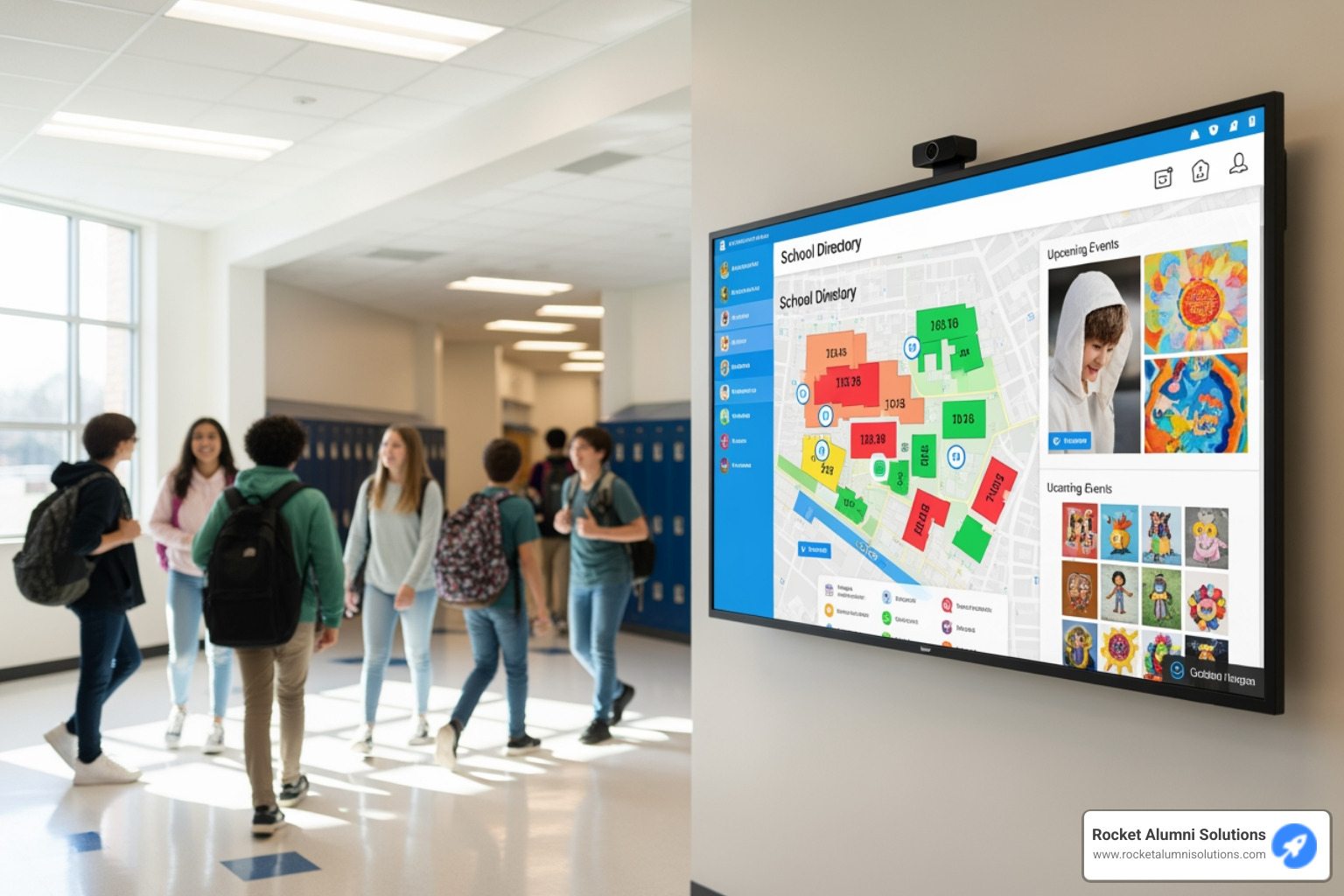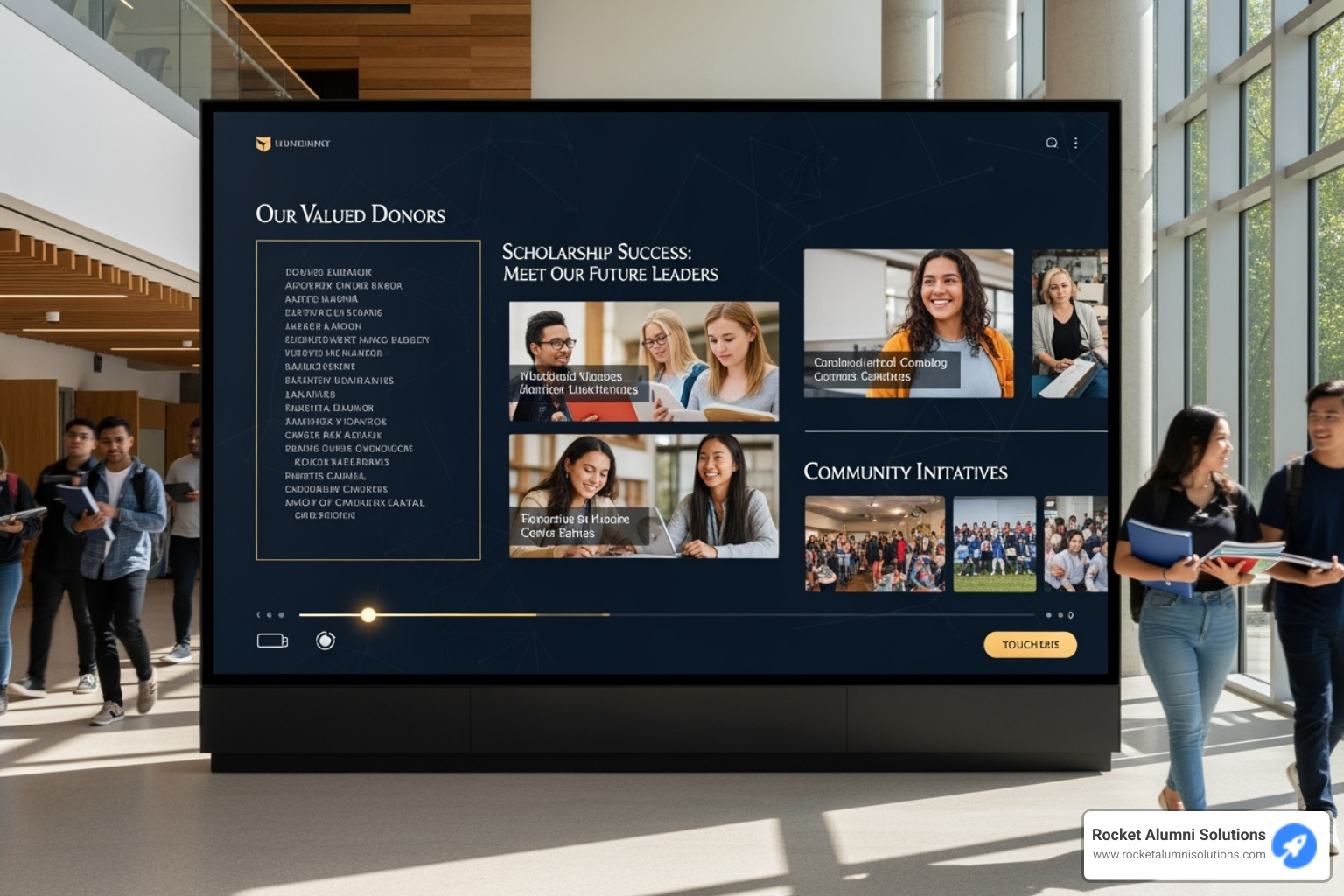Augmented reality technology in education is changing how teachers teach and students learn by blending the real world with digital improvements. This innovative approach allows immersive learning experiences that stimulate student engagement, foster understanding, and make complex concepts more accessible. Here's what you need to know:
- Engagement: Students can interact with 3D objects, like historical artifacts, bringing lessons to life.
- Real-World Application: Through virtual field trips, students explore environments beyond their physical reach, such as swimming with sharks or visiting global landmarks.
- Memory Retention: By learning through doing, AR helps improve how well students remember information.
- Collaboration: Technologies like McGraw Hill AR encourage teamwork, both in and out of the classroom.
Augmented reality isn't just a tech trend; it's reshaping educational landscapes by making learning more dynamic and engaging. As technology advances, the possibilities for integrating AR into curricula continue to expand, offering exciting prospects for educators and learners alike.

What is AR Technology in Education?
Augmented Reality (AR) is a technology that overlays digital content on the real world. In education, this means students can interact with both their physical environment and digital improvements. Imagine studying a science lesson where a dinosaur appears on your desk through your device's screen. That's AR in action!
Virtual Reality (VR), on the other hand, creates a completely immersive digital environment. While VR can transport students to a different world altogether, AR improves the real world around them. Both have their place in education, but AR is often more accessible because it doesn't require special equipment like VR headsets.
Interactive Learning with AR
AR makes learning more interactive and engaging. Students aren't just passive recipients of information; they actively explore and find. For example, using apps like Dinosaur 4D+, students can see and interact with 3D models of dinosaurs just by scanning cards with their devices. This kind of hands-on experience can make complex subjects like history and science more understandable and fun.
Benefits of Interactive Learning with AR:
- Improved Engagement: Students are more interested when they can see and manipulate 3D models.
- Better Understanding: Visualizing complex concepts helps in grasping them more effectively.
- Improved Retention: Interactive experiences aid memory retention better than traditional methods.

Case Study: The University of Scranton used AR in its admissions marketing, changing a logo into a video with the app Layar. This not only made the experience memorable but also showcased the potential of AR in engaging prospective students.
As AR technology in education continues to grow, it opens up new possibilities for learning. Teachers and students can explore subjects in ways that were once unimaginable, making education more interactive, engaging, and effective.
Benefits of AR Technology in Education
Augmented Reality (AR) brings a new dimension to education, offering benefits that go beyond traditional teaching methods. Let's explore how AR improves student engagement, provides real-time feedback, and fosters experiential learning.
Student Engagement
AR technology in education transforms the classroom into a dynamic learning environment. Students are no longer passive listeners; they become active participants.
- Interactive Experiences: Imagine students exploring a virtual aviary, learning about bird species not from textbooks, but through interactive 3D models. This kind of engagement makes learning fun and memorable.
Real-Time Feedback
AR provides immediate insights into students' understanding.
Instant Corrections: Students can receive real-time feedback, allowing them to correct mistakes on the spot. This is particularly useful in subjects like math and science, where understanding the process is crucial.
Adaptive Learning: With AR, lessons can be custom to fit each student's learning pace, offering a personalized educational experience.
Experiential Learning
Experiential learning is at the heart of AR technology in education. It allows students to learn by doing, which improves understanding and retention.
Hands-On Practice: AR enables students to practice skills in a safe environment. For instance, medical students can perform virtual surgeries, gaining confidence without risking patient safety.
Real-World Applications: By integrating AR, subjects like chemistry come alive. Apps like Element 4D let students experiment with chemical reactions using virtual elements, making abstract concepts tangible.
Incorporating AR into classrooms doesn't just make learning more engaging; it equips students with skills and knowledge in an immersive way. As we continue exploring this technology, the potential for changing education is vast and exciting.
Implementing AR in Classrooms
Augmented Reality (AR) is reshaping how students learn, particularly in STEM labs, media design, and through interactive games. Let's explore how AR is being integrated into classrooms.
STEM Labs
STEM education benefits greatly from AR. In these labs, students can manipulate virtual objects like molecules or human organs.
Interactive Models: Students at Colegio Escolapios Soria in Spain reported high engagement when using AR to explore scientific models, such as holding a volcano in their hands.
Complex Concepts Made Simple: AR allows students to visualize and interact with complex systems, like a car engine, making intricate topics more accessible and understandable.
Media Design
Media design classes are becoming more innovative with AR technology.
Creative Exploration: Students can create and interact with their own AR designs. Platforms like CoSpaces enable students to build their own AR objects, fostering creativity and technical skills.
Real-World Application: By designing AR content, students gain practical experience that can be applied in fields like graphic design, advertising, and digital media.
Interactive Games
Learning through play is a powerful educational tool, and AR makes it even more effective.
Engaging Gameplay: Interactive AR games can transform lessons into immersive experiences. For example, students might solve puzzles or complete challenges that require applying math or science concepts.
Collaboration and Competition: Games often encourage teamwork and friendly competition, motivating students to engage more deeply with the material.
Implementing AR in classrooms bridges the gap between theory and practice, making learning both fun and effective. As this technology continues to evolve, it promises to enrich educational experiences across various subjects.
Challenges and Considerations
Implementing AR technology in education comes with its own set of challenges. Schools must steer hardware requirements, teacher training, and the risk of cognitive overload to effectively integrate this technology.
Hardware Requirements
To use AR in classrooms, schools need the right equipment. Unfortunately, not all schools have access to modern devices. Proper hardware is essential for AR applications to work effectively. Older phone models or outdated operating systems won't support immersive experiences. Schools may need to invest in new smartphones or smart glasses, which can be costly.
Device Compatibility: Most AR apps require up-to-date devices. This means schools must evaluate their current technology and potentially purchase new equipment.
Budget Constraints: Many schools struggle with limited budgets, making it difficult to acquire the necessary tools for AR implementation.
Teacher Training
Even with the right hardware, successful implementation depends on well-trained educators. Some teachers may not be familiar with modern technology, which can hinder the adoption of AR in the classroom.
Training Programs: Schools should provide training sessions to help teachers learn how to use AR tools effectively. Workshops and online tutorials can be beneficial.
Ongoing Support: Continuous technical support is crucial. Establishing a helpdesk or support team ensures that teachers and students can quickly resolve any technical issues.
Cognitive Overload
While AR can make learning exciting, there's a risk of cognitive overload. Too much stimulation can overwhelm students and hinder their ability to absorb information.
Balanced Content: Educators should carefully design AR experiences to ensure they are engaging but not overwhelming. Content should be broken down into manageable pieces.
Monitoring Student Reactions: Teachers need to be aware of how students respond to AR activities. If students seem overwhelmed, adjustments may be necessary to maintain a productive learning environment.
Addressing these challenges is key to open uping the full potential of AR technology in education. With careful planning and support, schools can overcome these obstacles and provide enriching learning experiences.
Frequently Asked Questions about AR Technology in Education
What does AR mean in teaching?
Augmented Reality (AR) in teaching transforms how students engage with educational content. It overlays digital information, like images or animations, onto the real world. This interactive nature makes lessons more engaging and helps students grasp complex concepts.
For example, instead of just reading about the solar system, students can use AR to see planets orbiting the sun right in their classroom. This multisensory experience can make learning more memorable and fun.
Is AR still used in schools?
Yes, AR is still used in schools and is gaining popularity. Its interactive nature provides a multisensory experience that traditional methods can't match.
Research shows a growing interest in AR, with its demand in K-12 education projected to increase significantly. While some schools face challenges like hardware costs, many find ways to integrate AR into their curriculums because of its potential to boost student engagement and improve learning outcomes.
What are the disadvantages of AR in education?
While AR offers many benefits, it also has downsides. One major concern is overstimulation. The immersive nature of AR can sometimes overwhelm students, leading to cognitive overload.
This happens when there's too much information for the brain to process at once, making it hard for students to focus. To avoid this, educators should carefully plan AR activities, ensuring they are balanced and not too intense. Monitoring student reactions and adjusting as needed is crucial for maintaining a positive learning environment.
Understanding these challenges helps schools use AR effectively, ensuring it improves learning without overwhelming students.
Conclusion
The future of AR technology in education looks incredibly promising. As schools continue to adopt digital tools, AR stands out as a way to transform learning experiences. With its ability to create immersive, interactive environments, AR can make education more engaging and effective.
Rocket Alumni Solutions is at the forefront of this educational revolution. We specialize in creating digital platforms that recognize and showcase achievements, offering user-friendly media templates and seamless social media integration. Our services, including digital yearbooks, are custom to schools and athletic organizations, enhancing how communities celebrate success.
As we look ahead, AR's potential to reshape education is vast. It can bridge the gap between the virtual and real worlds, making learning more accessible and enjoyable. Our commitment is to help schools integrate AR seamlessly, ensuring it adds value without overwhelming students.
For those interested in exploring AR's possibilities, we invite you to learn more about our AR solutions and how they can enrich your educational environment.
The journey with AR is just beginning, and we are excited to lead the way in creating more engaging and memorable learning experiences.

















































































































































































































































































































